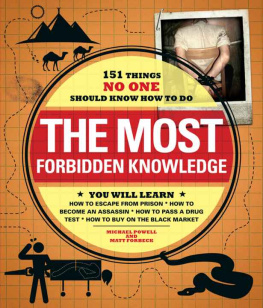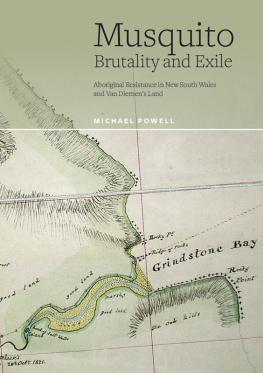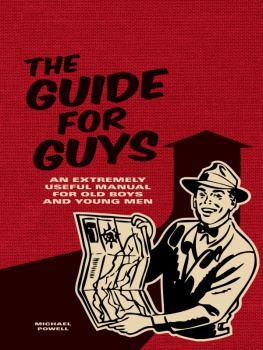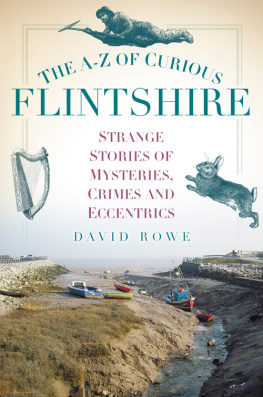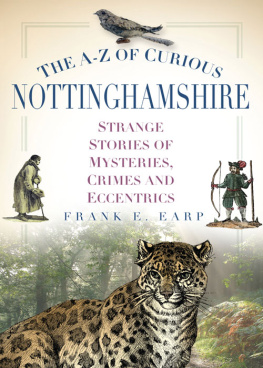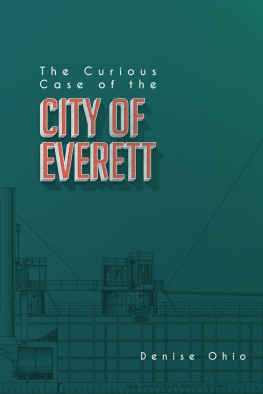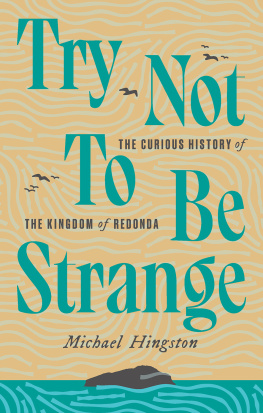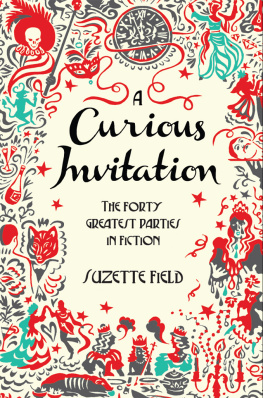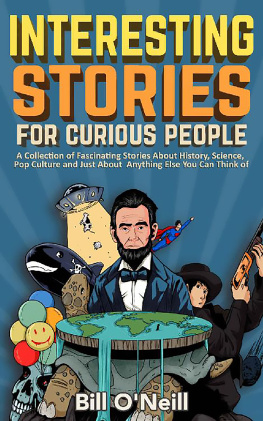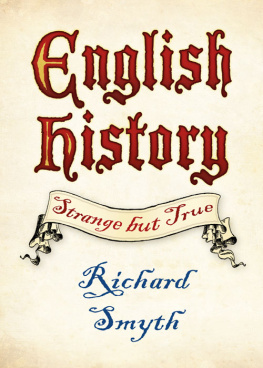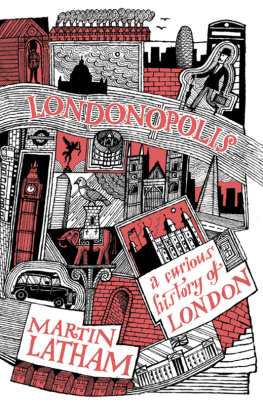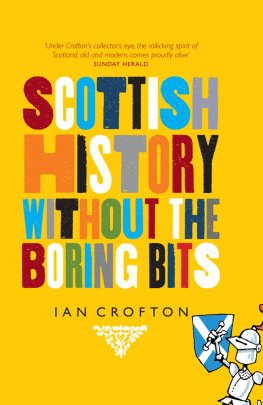
Fall River Press and the distinctive Fall River Press logo are registered trademarks of Barnes & Noble, Inc.
2007 by JW Cappellens Forlag under license from Gusto Company AS
Designed by Allen Boe
Illustrations AnnDra De Boe, Scanpix, Wikipedia Commons
All rights reserved. No part of this publication may be reproduced, stored in a retrieval system, or transmitted, in any form or by any means, electronic, mechanical, photocopying, recording, or otherwise, without prior written permission from the publisher.
ISBN 978-1-4351-3891-9 (e-book)
1 3 5 7 9 10 8 6 4 2
For information about custom editions, special sales, and premium and corporate purchases, please contact Sterling Special Sales at 800-805-5489 or specialsales@sterlingpublishing.com
www.sterlingpublishing.com

The Hat That Caused a Riot
INTRODUCTION
History isnt as boring as the textbooks would lead you to believe. Scattered between the famous historical milestones are tiny gems waiting to be discovered. These fascinating carbuncles contain all the bits of history they didnt tell you about in school.
Here are forty of the most curious events in history, from a thirty-eight minute war, to the time when a top hat caused a riot! Forgotten, bizarre, weird, and obscure facts, firsts and lasts, some peculiar inventions, and a few unpalatable truths all make up the fabric of the secret history that we unfold here.
If you thought you knew all you needed to know about history you will be amazed at the gaps in your knowledge as you discover, among other things, which U.S. president was killed by his own doctors, who was the last person executed in the Tower of London, and how murder came to America aboard the Mayflower.
Somebody once said, If you do not like the past, change it. Youll be surprised how often history has been rewritten in favor of the remembered, while cutting the long forgotten and casually overlooked out of the story altogether.
THE BATTLE OF KADESH AND THE PHARAOHS BIG WHITE LIE
Pharaohs ruled Egypt for over 3,000 years, but one of them stands out. For sixty-seven years Ramesses II reigned over the largest empire in the world, outliving many of his children. His crowning achievement, however, was his self-created legend. He was an ancient master of spin, best shown by how he rewrote history to make himself appear a great hero after his poor performance at the Battle of Kadesh.
Background of the Battle
For several centuries prior to the reign of Ramesses II, the Egyptian, Mittani, and Hittite empires had been in conflict, with Egypt continually ceding land. During the reign of Ramessess father, Seti I, the Canaanite city of Kadesh was under Egyptian control, but it had been lost again by the time he came to power.

The Battle of Kadesh
The Battle of Kadesh took place in 1274 B.C . between the army of Ramesses II and the Hittite forces of Muwatalli II at the Orontes River in present-day Syria. It was the biggest chariot battle ever fought, and it ended in a stalemate. If anything, the Hittites had the upper hand, but Ramessess version of his victory is the most epic example of spin-doctoring in the ancient world.
The Hittite king Muwatalli hid his troops behind the hill at Kadesh. Ramesses believed that they were many miles away to the north. As soon as he discovered that his catastrophic misjudgment had led him into a trap, Ramesses instructed two of his divisions to cross the Orontes to help him. Before they could arrive, 2,500 of Muwatallis chariots attacked them and then turned on Ramessess division. The pharaoh narrowly escaped capture, and it was only after the arrival of an army from Amurru, which drove the Hittites back, that a truce was called.
Ramesses had suffered many casualties and couldnt capture any more territory. It would be another five years before his army was strong enough to attack the Hittites again, and his defeat caused several revolts within the Egyptian empire. So he set his spin machine into action to rewrite history on an extraordinary scale.
Ancient Spin
In his book, Chronicle of the Pharaohs, Peter Clayton sums up Ramessess ruling ethos: During his long reign of sixty-seven years, everything was done on a grand scale. No other pharaoh constructed so many temples or erected so many colossal statues and obelisks. No other pharaoh sired so many children. Ramessess victory over the Hittites at Kadesh was celebrated in one of the most repeated Egyptian texts ever put on record.
To rewrite history, Ramesses commissioned legions of artisans to carve epic depictions of the Battle of Kadesh in temples around the empire. They depicted him as a god-like warrior, singlehandedly charging the enemy and driving them back, after being abandoned by his troops. In total, he commissioned no fewer than ten inscriptions, a longer poem, and a shorter bulletin with additional reliefs. Many of them can still be seen today, such as those in the magnificent Abu Simbel Temple in Nubia, or at the Temple of Luxor, where the Pharaohs big white lie, set in stone, still stands the test of time.

THE UNFORTUNATE DEATH OF DRACO
Draco was the first law scribe of Athens in the seventh century B.C . The word draconian, which is often attributed to measures or punishments that are unusually severe or cruel, is named for Draco, because the laws he imposed were so harsh. Despite this, he was very popular; in fact, his popularity was the direct cause of his curious and untimely death.
The Athenian Eupatrids
The eupatrids were the Athenian noblemen. They made all the legal decisions and were the enforcers of laws which, until Draco wrote them down, were arbitrary and inconsistent. By 621 B.C . the Athenian people were no longer willing to accept these unwritten laws, so Draco was instructed to codify Athenian law for the first time. He didnt create the laws; he merely standardized them and wrote them down.

The School of Athens
Draconian Laws
The laws were particularly ruthless and recording them highlighted their harshness. Anyone who was in debt to a social superior could be forced into slavery. Owing to ones inferiors also merited punishment, albeit a lesser one. The death penalty often was applied for minor offenses. When Draco was asked for his opinion, he stated that the death penalty was appropriate for stealing something as insignificant as a cabbage. Plutarch describes Dracos attitude towards the death penalty in his Life of Solon: And Draco himself, they say, being asked why he made death the penalty for most offenses, replied that in his opinion the lesser ones deserved it, and for the greater ones no heavier penalty could be found.
Dracos Death
Dracos death is one of the most curious events in ancient history. In 590 B.C . a testimonial was held in honor of the great law scribe at the theater of Athena. As Draco made his grand entrance at the open-air arena, thousands of over-enthusiastic supporters threw their hats and cloaks on him, as the customary sign of appreciation and respect. Because there were so many attendees, the pile of clothing was overwhelming. By the time he was rescued from beneath the enormous pile of discarded garments, Draco had suffocated to death. If he hadnt been so popular he might have escaped with his life.


